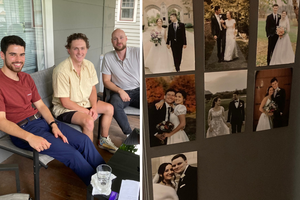The Many Miracles of St. John Bosco
The beloved patron of children worked countless wonders in his lifetime, from miraculous healings to multiplying food.

“There was no greater thaumaturgus (miracle worker) in the nineteenth century,” was the verdict of Father Augustine Auffray, one of Don Bosco's biographers. “Death, life, the devil, disease and nature proved docile to his commands.” The miracles, Auffray wrote, “both accredited and facilitated his work.”
St. John Bosco (Aug. 16, 1815, to Jan. 31, 1888), founder of the Salesians, dedicated his life to improving the lives of countless disadvantaged youth. Even in his lifetime, he was known for working wonders to serve his people and prove the divine sanction for his work. And yet, Bosco himself denied that he was responsible for miracles:
Don Bosco does not work miracles. He prays himself and gets others to pray for those who recommend themselves to him, and that is all. As for the miracles, it is the Blessed Virgin who works them. She sees Don Bosco needs money to feed and bring up his thousands of children as Christians, and then she brings him benefactors by the favors she showers upon them.
The biographies and documents of his life are filled with numerous examples of healing, of which two examples will suffice. There was a crippled woman brought by donkey cart and desperate to see him in spite of the crowd. When the cart couldn't get any closer, she suddenly found herself able to walk and rejoiced as she came to greet him. There was also a blind girl whose eyes, the doctors said, were “completely ruined.” Bosco asked if she was given the gift of sight, she would promise to use it only for things that glorify God. She made the promise, and her sight was restored.
Similar accounts of sudden and unexpected healing could fill a book. They were closely examined during the canonization process, with affidavits submitted by witnesses and those who had been healed, and biographers collecting many more.
The stories often have a certain charm to them. He was often greeted by children, and one day said, “My dear boys, I wish I had something for you!” All he had, however, was a small bag of nuts, and these he distributed one handful at a time to each boy. More boys kept arriving, but the small bag of nuts never seemed to be exhausted, even after 35 boys had each received a handful.
A similar multiplication of food was reported by Father Francis Dalmazzo, who witnessed it as a youth when he lived at Bosco's Turin Oratory. There were exactly 15 rolls for breakfast, but as each of the 300 boys arrived at the front of the line, they received a roll from the basket. Father Dalmazzo would later testify that after all had been fed, there were still 15 rolls in the basket.
St. John said he could literally smell sin on some people, and frequently could tell if a pupil had made an act of charity or committed some offense. Often, he could foresee great or terrible things for people, and for his entire life was subject to intense, often visionary and prophetic dreams, including a lengthy vision of hell.
In one case, he foretold the death of a student, and said two more would follow within two months. He gave their names to one of his priests, who wrote them down and sealed them in an envelope. Within two months both of the boys became ill and died despite efforts to care for them. The Memoirs are filled with many similar cases.
One of the most startling miracles was a case of bilocation in 1886, while Bosco was in Turin and the witness, Father John Branda, was in Spain. The Salesian College of Sarria had taken in young men who were not interested in reforming, and on the night of Feb. 5, Father Branda was awoken by the voice of Don Bosco. The Father saw him standing in his room. Don Bosco said, “Your house is going well. I am pleased with you, but the is a dark spot.” At that moment, Branda saw the image of four young men from the school. Bosco gestured to them, saying, “Tell this one to be more prudent. As for the others, they must be expelled.”
Father Branda then followed Don Bosco through the darkened dormitories. He was guided by a halo light that radiated from Bosco, passing through doors that opened without being touched, until they returned to Branda's room and Don Bosco disappeared, plunging him into darkness.
The oneiric quality of the vision and the lack of evidence against the boys made the priest hesitate to exercise any discipline. A few days later he received a letter asking if he'd followed the orders Don Bosco had given him when he visited in the night. Still, he hesitated, until one morning as he was celebrating Mass he heard an inner voice saying, “If you fail to carry out this order, this is your last Mass.” When he finally summoned the boys for discipline or dismissal, each appeared as they had in the vision.
The biographies of St. John Bosco tell of many more miracles, including the spectral dog that allegedly kept watch over him, instances of clairvoyance, telepathy, levitation and more. The witness reports are fairly extensive, and some of the people who saw his miracles lived into the 20th century. The Salesian Portal (donboscosalesianportal.org) is a good source of information, and includes all of the meticulous, 19-volume Biographical Memoirs of Saint John Bosco in PDF format.
- Keywords:
- St. John Bosco
- don bosco
- miracles
- saints

















